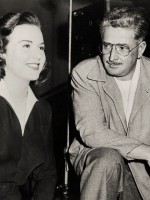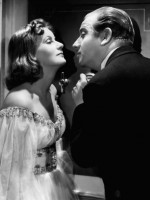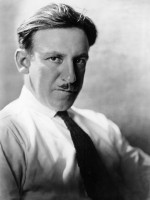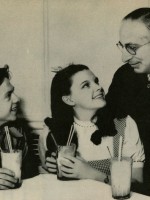Irving Thalberg is a Director, Scriptwriter, Producer, Editor and Thanks American born on 30 may 1899 at Brooklyn (USA)
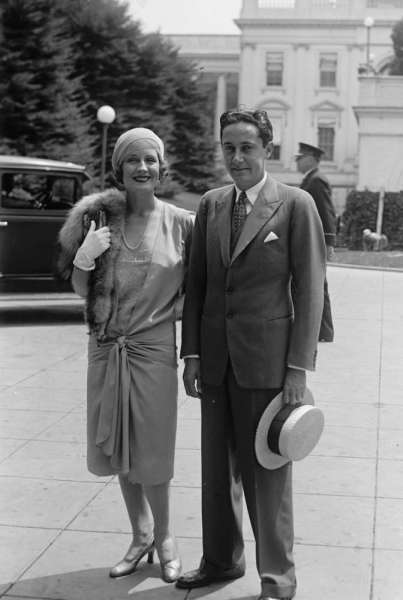
Irving Grant Thalberg (May 30, 1899 – September 14, 1936) was an American film producer during the early years of motion pictures. He was called "The Boy Wonder" for his youth and his extraordinary ability to select the right scripts, choose the right actors, gather the best production staff and make hundreds of very profitable films, including Grand Hotel, China Seas, Camille, Mutiny on the Bounty and The Good Earth. His films carved out a major international market, "projecting a seductive image of American life brimming with vitality and rooted in democracy and personal freedom," states biographer Roland Flamini.
[...]See more...
À l’issue de ses études, il se forme seul au secrétariat et est engagé au siège new-yorkais de la prestigieuse Universal Pictures. Il y travaille d'abord comme secrétaire de D.
[...]See more...
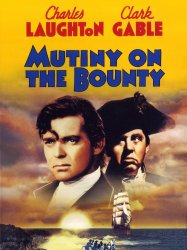 (1935)
(1935)
(Producer) (1929)
(1929)
(Producer)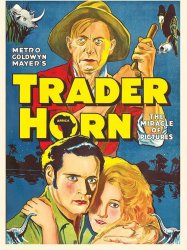 (1931)
(1931)
(Producer) (1937)
(1937)
(Executive Producer) (1939)
(1939)
(Thanks)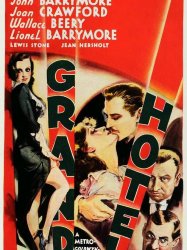 (1932)
(1932)
(Producer)
Source : Wikidata
Irving Thalberg

- Infos
- Photos
- Best films
- Family
- Characters
- Awards
Birth name Irving Grant Thalberg
Nationality USA
Birth 30 may 1899 at Brooklyn (USA)
Death 14 september 1936 (at 37 years) at Santa Monica (USA)
Nationality USA
Birth 30 may 1899 at Brooklyn (USA)
Death 14 september 1936 (at 37 years) at Santa Monica (USA)
Irving Grant Thalberg (May 30, 1899 – September 14, 1936) was an American film producer during the early years of motion pictures. He was called "The Boy Wonder" for his youth and his extraordinary ability to select the right scripts, choose the right actors, gather the best production staff and make hundreds of very profitable films, including Grand Hotel, China Seas, Camille, Mutiny on the Bounty and The Good Earth. His films carved out a major international market, "projecting a seductive image of American life brimming with vitality and rooted in democracy and personal freedom," states biographer Roland Flamini.
[...]See more...
Biography
Fils d’immigrés juifs allemands, Irving Grant Thalberg voit le jour au domicile de ses parents à Brooklyn. Né avec une malformation cardiaque, son enfance est marquée par les maladies. Souvent contraint au repos forcé, il montre cependant un goût certain pour les études et la lecture, et les ambitions que sa mère nourrit pour lui le poussent à l'excellence.À l’issue de ses études, il se forme seul au secrétariat et est engagé au siège new-yorkais de la prestigieuse Universal Pictures. Il y travaille d'abord comme secrétaire de D.
[...]See more...
Best films
 (1935)
(1935)(Producer)
 (1929)
(1929)(Producer)
 (1931)
(1931)(Producer)
 (1937)
(1937)(Executive Producer)
 (1939)
(1939)(Thanks)
 (1932)
(1932)(Producer)
Usually with
Filmography of Irving Thalberg (114 films)
Producer

A Night at the Opera (1935)
, 1h36Directed by Lesley Selander, Sam Wood, Edmund Goulding
Origin USA
Genres Comedy, Musical
Themes Films about music and musicians, Musical films
Actors Groucho Marx, Chico Marx, Harpo Marx, Kitty Carlisle, Allan Jones, Margaret Dumont
Roles Executive Producer
Rating77%





Otis B. Driftwood (Groucho), business manager for the wealthy Mrs. Claypool (Margaret Dumont), has stood her up and is having dinner with another woman in the very same restaurant. When they find each other at opposite tables, Driftwood joins Mrs. Claypool, and introduces her to Herman Gottlieb (Sig Ruman), director of the New York Opera Company, also dining at the restaurant. Driftwood has arranged for Mrs. Claypool to invest $200,000 in the opera company, allowing Gottlieb to engage Rodolfo Lassparri, (Walter Woolf King), the "greatest tenor since Caruso".
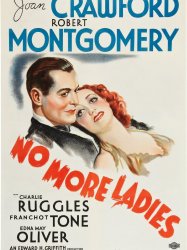
No More Ladies (1935)
, 1h20Directed by George Cukor, Edward H. Griffith
Origin USA
Genres Comedy, Romantic comedy, Romance
Actors Joan Crawford, Robert Montgomery, Charles Ruggles, Joan Fontaine, Franchot Tone, Vivienne Osborne
Roles Producer
Rating59%





Marcia (Joan Crawford) is a young socialite who shares her New York home with her alcoholic grandmother, Fanny Townsend (Edna May Oliver). Marcia is a firm believer that a couple should be faithful to one another, unlike her peers who do not feel so strongly. Marcia meets Jim (Franchot Tone), who agrees with her on the subject of a couple's monogamy and pursues her. Marcia, however, decides to pursue Sherry (Robert Montgomery), whom Marcia sees as a challenge and seeks to cure him of his philandering nature.
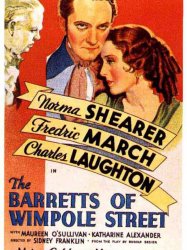 , 1h49
, 1h49Directed by Sidney Franklin
Origin USA
Genres Drama, Biography, Romance
Themes Films about families, Poésie, Théâtre, Films based on plays
Actors Norma Shearer, Fredric March, Charles Laughton, Maureen O'Sullivan, Katharine Alexander, Una O'Connor
Roles Producer
Rating68%





The bulk of the story takes place in the lavish home of Edward Barrett (Charles Laughton) and his adult children. Upstairs, Elizabeth (Norma Shearer), called "Ba", the oldest girl, consults with her doctor. She is recovering from an undisclosed illness and is extremely weak – standing and walking are painful – but the doctor advises that a full recovery is possible.

The Merry Widow (1934)
, 1h39Directed by Ernst Lubitsch
Origin USA
Genres Drama, Comedy, Romantic comedy, Musical, Romance
Themes Monde imaginaire, Films about music and musicians, Musical films, Operetta films
Actors Maurice Chevalier, Jeanette MacDonald, Edward Everett Horton, Una Merkel, George Barbier, Minna Gombell
Roles Producer
Rating71%





Playboy, Captain Danilo (Maurice Chevalier), is ordered by King Achmet of Marshovia (George Barbier) to court and marry Madame Sonia (Jeanette MacDonald), a rich widow who owns a large portion of the kingdom.

What Every Woman Knows (1934)
Directed by Lesley Selander, Gregory La Cava
Origin USA
Genres Drama, Comedy, Romantic comedy
Themes Political films, Films based on plays
Actors Helen Hayes, Brian Aherne, Madge Evans, Dudley Digges, Lucile Watson, Donald Crisp
Roles Executive Producer
Rating65%





Alick Wylie (David Torrence) and his sons David (Donald Crisp) and James (Dudley Digges) are greatly concerned about Alick's daughter Maggie (Helen Hayes), who has been jilted by a minister. She is less than heartbroken, but they fear for her marital prospects at the age of 27. When they catch poor but ambitious 21-year-old John Shand (Brian Ahern) breaking into their house late at night to use their library, they seize the opportunity. Impressed by his initiative, they offer him £300 to finance his studies provided that he give Maggie the option of marrying him after five years.
[...]See more...

Riptide (1934)
, 1h32Directed by Edmund Goulding
Origin USA
Genres Drama, Romance
Actors Norma Shearer, Robert Montgomery, Robert Z. Leonard, Herbert Marshall, Mrs Patrick Campbell, Richard 'Skeets' Gallagher
Roles Producer
Rating63%





This script must be run from the command line

Outcast Lady (1934)
, 1h17Directed by Robert Z. Leonard
Origin USA
Genres Drama, Melodrama, Romance
Actors Constance Bennett, Herbert Marshall, Henry Stephenson, Leo G. Carroll, Mrs Patrick Campbell, Hugh Williams
Roles Executive Producer
Rating54%





Bien qu'ils s'aiment beaucoup, Iris March et son amour d'enfance, Napier Harpenden, font face à la désapprobation du père de Napier, Sir Maurice, qui considère la relativement pauvre Iris et son frère alcoolique Gerald comme un obstacle à l'avenir politique de son fils. Napier suggère qu'ils attendent qu'il s'établisse dans le service diplomatique britannique en Inde pour se marier, et Iris accepte à contrecœur. Après quatre ans d'attente, cependant, Iris cède à la pression de Gerald et accepte la demande en mariage de Boy Fenwick, un riche ami de son frère qui l'aime depuis longtemps.
[...]See more...

Tugboat Annie (1933)
, 1h26Directed by Mervyn LeRoy
Origin USA
Genres Drama, Comedy, Comedy-drama, Romance
Themes Seafaring films, Transport films
Actors Marie Dressler, Wallace Beery, Robert Young, Maureen O'Sullivan, Willard Robertson, Tammany Young
Roles Producer
Rating68%





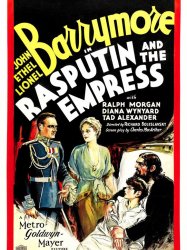
Rasputin and the Empress (1933)
, 2h1Directed by Richard Boleslawski, Charles Brabin
Origin USA
Genres Drama, Historical
Actors John Barrymore, Ethel Barrymore, Lionel Barrymore, Ralph Morgan, Diana Wynyard, Edward Arnold
Roles Executive Producer
Rating64%





The story takes place in the Russian Empire during the last years of the reign of Czar Nicholas II and the Czarina Alexandra. Reform-minded Prince Paul has long been concerned about the plight of the common people and knows a revolution is brewing. Prince Alexei, heir to the throne, is loved by the people but has hemophilia, and a slight fall turns out to be life-threatening. When royal physician Dr. Remezov is powerless to stop the boy's bleeding, Princess Natasha, Alexandra's lady-in-waiting and Paul's fiancee, recommends Rasputin as a healer.
[...]See more...

Eskimo (1933)
, 1h57Directed by W. S. Van Dyke
Origin USA
Genres Drama, Action, Adventure
Actors Ray Mala, Lotus Long, W. S. Van Dyke, Edward Hearn, Joe Sawyer, Edward Hearn
Roles Producer
Rating69%





Mala is a member of an unspecified Eskimo tribe living in Alaska. He has a wife, Aba, and an infant son. He and the villagers are shown welcoming a newcomer to their village, hunting walrus, and celebrating the hunt. Mala learns of white traders at nearby Tjaranak Inlet from another Eskimo. Mala learns about rifles and desperately wants one, and Aba longs for needles and other white men's goods. Mala gratefully offers Aba's sexual favors to the man for telling him about the trading ship's presence.
[...]See more...
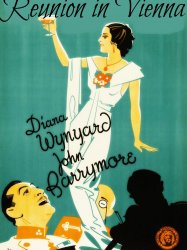
Reunion in Vienna (1933)
, 1h38Directed by Sidney Franklin
Origin USA
Genres Drama, Romance
Themes Théâtre, Films based on plays
Actors John Barrymore, Diana Wynyard, Frank Morgan, Henry Travers, May Robson, Eduardo Ciannelli
Roles Producer
Rating60%





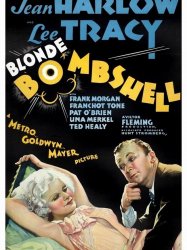
Bombshell (1933)
, 1h36Directed by Victor Fleming
Origin USA
Genres Drama, Comedy, Comedy-drama, Romantic comedy, Romance
Themes Films about television, Films based on plays
Actors Jean Harlow, Lee Tracy, Frank Morgan, Franchot Tone, Pat O'Brien, Una Merkel
Roles Producer
Rating70%





Movie star Lola Burns (Jean Harlow) is angry with her studio publicist E.J. "Space" Hanlon (Lee Tracy), who feeds the press with endless stories about her greatness. Lola's family and staff are another cause of distress for her, as everybody is always trying to take money from the actress. All Burns really wants is to live a normal life and prove to the public that she's not a sexy vamp but a proper lady. She tries to adopt a baby, but Hanlon, who secretly loves her, thwarts all her plans.

Freaks (1932)
, 1h4Directed by Tod Browning
Origin USA
Genres Drama, Thriller, Fantastic, Horror
Themes Circus films, Medical-themed films, Films about disabilities
Actors Wallace Ford, Edgar Allan Woolf, Leila Hyams, Olga Baclanova, Roscoe Ates, Harry Earles
Roles Producer
Rating77%





The film opens with a sideshow barker drawing customers to visit the sideshow. A woman looks into a box to view a hidden occupant and screams. The barker explains that the horror in the box was once a beautiful and talented trapeze artist. The central story is of this conniving trapeze artist Cleopatra, who seduces and marries sideshow midget Hans after learning of his large inheritance. Cleopatra conspires with circus strongman Hercules to kill Hans and inherit his wealth. At their wedding reception, Cleopatra begins poisoning Hans' wine.
[...]See more...

Strange Interlude (1932)
, 1h49Directed by Robert Z. Leonard
Origin USA
Genres Drama, Romance
Actors Norma Shearer, Clark Gable, Alexander Kirkland, Ralph Morgan, Robert Young, May Robson
Roles Producer
Rating56%





Gordon Shaw was a flyer who was shot down and killed during World War I. Nina would have married him before he left, but her father forbade the marriage. Charlie is a friend, but Nina does not love him and he is too timid, too shy, to tell her the way that he feels about her. Sam is her husband and her love disappears after the ceremony when she finds out that there is mental illness in his family and that there can be no children.
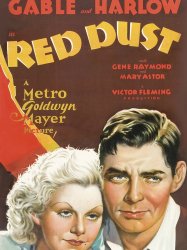
Red Dust (1932)
, 1h23Directed by Victor Fleming
Origin USA
Genres Drama, Adventure, Romance
Themes Films about sexuality, Erotic films, Films about prostitution, Films based on plays, Erotic thriller films
Actors Jean Harlow, Clark Gable, Mary Astor, Gene Raymond, Donald Crisp, Tully Marshall
Roles Producer
Rating71%





On a rubber plantation in French Indochina during the monsoon season, the plantation's owner/manager Dennis Carson (Gable), a prostitute named Vantine (Harlow), and Barbara Willis (Astor), the wife of an engineer named Gary Willis (Raymond) are involved in a love triangle. Carson abandons an informal relationship with Vantine to pursue Barbara, but has a change of heart and returns to Vantine.
 Connection
Connection

